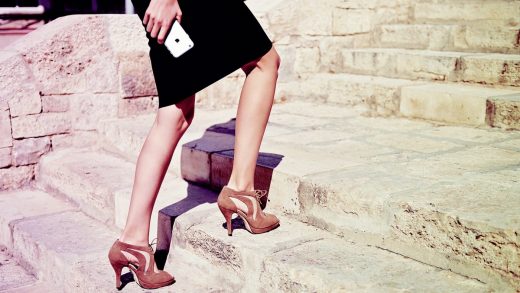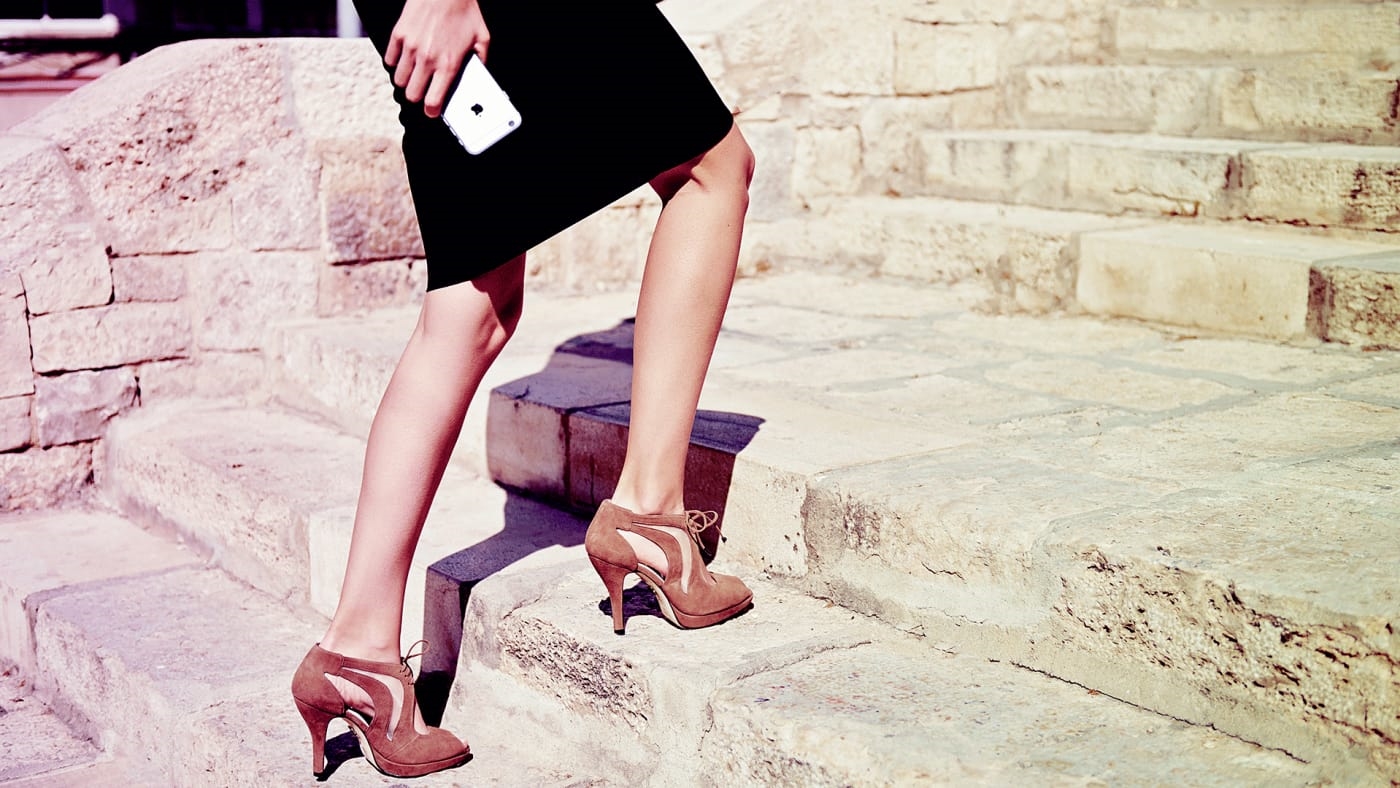High Heels, Invented For The Male Gaze, Get A Feminist Makeover
Is the high heel a tool of empowerment or a tool of the patriarchy designed to slow a woman down?
This is a question that Antonia Saint Dunbar, a serial entrepreneur, asked herself back in 2014 while rushing to work. “I was wearing my most comfortable pair of three-inch heels, but my feet were killing me,” she says.
It’s a situation that any woman who has ever worn a pair of heels can relate to. Trudging around in most types of heels, especially stilettos, is a recipe for blisters, swollen toes, throbbing heels, a general sense of misery, and even long-term health issues like nerve damage. And yet, it’s a common part of women’s lives: 73% of women wear them, and 39% do so every day.
According to a study by the American Orthopaedic Foot and Ankle Society, 50% of women experience daily pain from their shoes. Heels put pressure on the spine, back, knees, and toes, which can lead to painful conditions like sciatica. And they can be expensive: In addition to dropping money on the shoes themselves, 43% of women in New York have splurged on a taxi because it was too painful to walk in their high heels.
But for all these problems, stiletto heels continue to be a central part of many professional women’s wardrobes. The more highly paid a woman is, the more likely she is to wear them: 21% of women who earn over $150,000 a year wear heels to work every single day, while 61% of women who earn less than $40,000 never wear heels to work. There are still some industries where heels are part of an office dress code. In 2016, Nicola Thorp, a temporary receptionist at PwC, was sent home from work without pay because the company made it mandatory for women to wear two- to four-inch heels. This turned into a scandal, prompting 150,000 women to sign a petition calling for a law that would forbid workplace policies about heels.
These were the many issues that Dunbar considered as her feet ached on her commute to work. She cofounded the period underwear company THINX because she felt that women’s underwear wasn’t actually meeting women’s biological needs. As she led product design, she began to realize that men have often led the design of women’s intimates and have failed to make them truly functional. It occurred to her that the same was true for high heels.
“If you look at the marketplace, there’s this patriarchal structure in place where male designers create products that are made for women,” she says. “When it came to shoes, I was finding that these were not really instruments made for walking. They are not providing any support for actually moving through your life.”
So she decided to tackle this problem head on. She’s spent the last three years reinventing the high heel from the ground up in an ambitious attempt to make them as comfortable as a sneaker. The project came to fruition last year, when she launched a startup called Antonia Saint. And she’s not alone. Other women–ranging from designers at large shoe companies like Cole Haan to the founders of small tech startups like True Gault–are working to redesign the high heel to permanently put an end to the pain they cause.
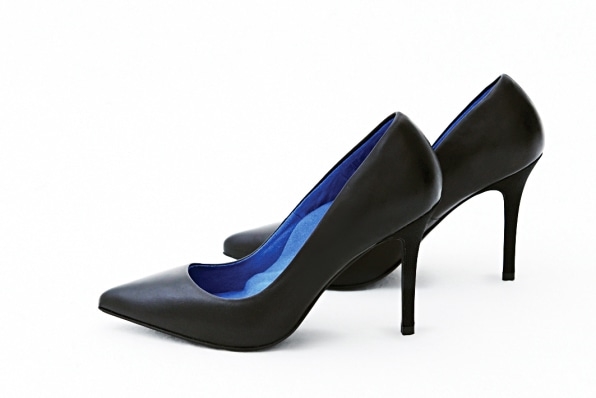
The Sometimes Sexist History Of The Heel
Part of the reason the modern heels are so uncomfortable is because they were developed by men who never actually had to wear them. The stiletto was invented by French designers Roger Vivier and André Perugia in the early 1900s. The shoes were popularized by film stars like Marilyn Monroe and Rita Hayworth, and quickly became a component of the modern woman’s wardrobe.
Some of the most well-known high heel brands of our time are associated with male designers: Manolo Blahnik, Jimmy Choo, Stuart Weitzman. One of the most famous, Christian Louboutin, explained that he designs the shoes for men, since they are the ones who will appreciate how attractive women will look in them. “I never forget that shoes also have to please men,” Louboutin told Vogue in 2013. “As a man, I totally understand looking at a girl and saying, ‘Darling, we’re having dinner together tonight, so do you mind to change?’ I understand that type of mentality from a man who loves his wife, his woman. He’s concerned about the way you look.”
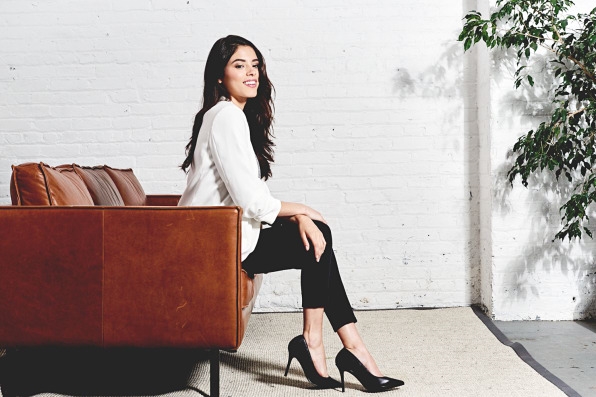
[Photo: courtesy of Antonia Saint]
Reinventing The Heel
In the modern professional context, Dunbar believes that many women continue to wear the heel because it makes them feel empowered. “There are many feminists that love to wear their heels,” says Dunbar. “If you look at a snapshot of the most successful women in America and around the world–Oprah, J.K. Rowling, Tina Fey–they wear these towering, teetering heels.”
Dunbar has set out to create heels that are both beautiful and also functional, that is to say, shoes that allow women to walk in them. She spent months analyzing the problems with current heels. She’s discovered that the shoes are often ill-fitting, causing the foot to move around, distributing the weight unevenly. Heels also don’t have much padding, so they don’t absorb the shock that comes with each step.
To address some of these issues, she located female shoe designers in Brooklyn and also sought the counsel of a well-known podiatrist who has studied how damaging high heels can be a on a woman’s body. Together, they have identified many ways to improve the design of the high heel to make them more comfortable.
Dunbar has focused on trying to hold the foot in place, allowing women to walk with more stability. She’s created a heel cup and a patented insert that distributes the weight evenly so that that the medial, lateral, and transverse arches are properly supported. There are also strips at the sides and back of the shoe that are meant to grip the heel to prevent the foot from slipping while also preventing blisters. Dunbar believes that each of these small improvements works together to eliminate the discomfort that a woman feels when she wears a heel, and taken together, it creates a totally different walking experience.
To help women ensure their heels fit, Dunbar has built an app that allows women to take pictures of their foot and answer several questions about fit. They will then be matched with their most accurate size. And since 60% of all people have different sized feet, she allows women to purchase a pair of shoes made up of two different sizes.
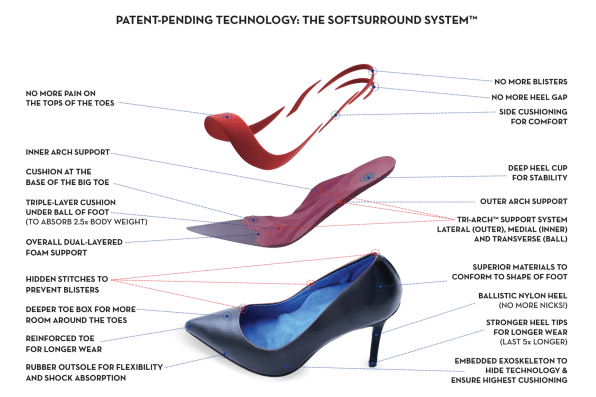
[Photo: courtesy of Antonia Saint]
Rethinking The Size Chart
But one major problem with heels, Dunbar says, is that most women aren’t wearing the correct shoe size, aggravating the inherent problems with the shoes. As she did research, she discovered that 88% of women wear shoes that are too small for their feet, which has been leading to an uptick in foot surgeries. “As we analyze our data, we’re finding that American women really don’t know their shoe size,” Dunbar says. “The last time we really sized ourselves was when we were done growing as kids. And yet women’s feet change over the course of their lives, as the rest of their bodies change.”
This problem of inaccurate sizing is something that another entrepreneur, Sandra Gault, wanted to take on. She believes that one of the main reasons that high heels are so uncomfortable is that the shoe industry hasn’t done enough to tailor shoes to the unique characteristics of each person’s foot. “The industry isn’t interested in accurate sizing,” Gault says. “They are more interested in mass producing shoes as quickly as possible, so the idea of adding more complexity to the sizing process seems like an unnecessary complication.”
The standard way we determine shoe size is through a metal foot sizer called the Brannock device that was first developed in 1925. This continues to be how consumers identify their shoe size. It’s not a particularly accurate way of identifying your shoe size, and to make things worse, companies don’t have a standardized way to size shoes, which is why it’s hard to tell exactly what size you are with different brands.
Sizing problems are exacerbated when it comes to heels, since in addition to considering the width and length of the foot, you need to consider how the foot changes when it is at a downward incline. “With heels, if your size is off by just a few millimeters, your toes are just jamming to the front of the shoe,” she says. “Your heel might slip around, going sideways. The ball of the foot experiences a lot of pressure.”
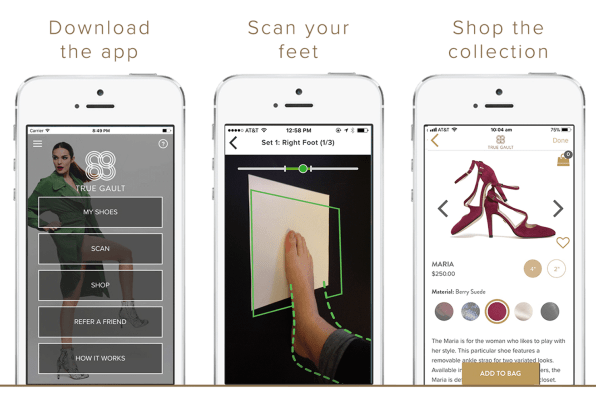
[Photo: courtesy of True Gault]
With her startup, Gault has created an app that uses three pictures of the left and the right foot to create a 3D image. Rather than fitting you into a shoe size, True Gault creates a serial number that can be used to manufacture each set of shoes. Then, the company creates a customized pair that are tailored to your unique physiology. This means taking into account the arch of the foot, the sizes of toes, and the width, not just of the widest part of your foot, but the entire length of it. In addition to creating heels that are perfectly suited to the biomechanics of a woman’s foot, True Gault heels are designed to keep the foot in place so weight is distributed across the entire plane of your foot, rather than in one particular area.
The really complex part of Gault’s business model has to do with the manufacturing. Gault has developed a platform that allows shoe factories to build shoes based on 3D models and foot scans, rather than the current industry norm, which is to build shoes based on a mold that looks like a foot. She currently manufactures her shoes in Alicante, Spain, but the technology she’s developed can be easily implemented in any factory.
Gault hopes to disrupt the industry on a more profound level by licensing her platform out. Other brands could quickly adopt custom sizing at their own factories by buying her technology. “In the future, rather than having a particular shoe size, you could just bring your True Gault serial number to any brand on the market, which will then custom-build a pair of shoes for you.”
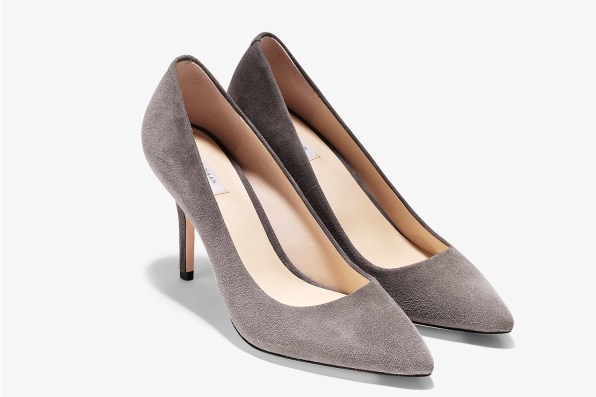
The Shoe Industrial Complex
While startups are radically rethinking the high heel, some of the bigger players in the market, like Cole Haan, are also trying to innovate around the shoe. In some ways, the impact of these improvements could have a more immediate and farther reaching impact because the company is already at scale, selling $590 million worth of shoes a year.
Over the last three years, Cole Haan has been working on an ambitious project to understand how women’s bodies interact with heels. At an innovation lab in New Hampshire, Cole Haan’s product developers work alongside biomechanists from universities across the country to analyze exactly where a woman feels pressure on her foot, and how her body adapts as she walks in heels.
The goal of this research is to create heels that better distribute the weight and absorb shock with every step. “We realize this is a long-term and ongoing project,” says Justine Suh, Cole Haan’s chief merchandizing officer. “But rather that waiting to create the perfect shoe, we’re incorporating what we are finding into each new collection, and continuing to innovate behind the scenes.”
The first major step forward came in 2016, when the brand launched two heels, the Eliza and the Antoinette, which were 3- and 4- inches tall, respectively. The shoe designers made several tweaks that made these heels different from anything they had formerly created. They moved the heel slightly closer to the middle of the foot, to distribute the weight better and also made the entire footbed from an energy foam that cradles the foot and provides cushioning to reduce the impact and fatigue caused by every step. And finally, the shoe was flexible rather than rigid, so that it facilitated movement, rather than creating pressure with each step.
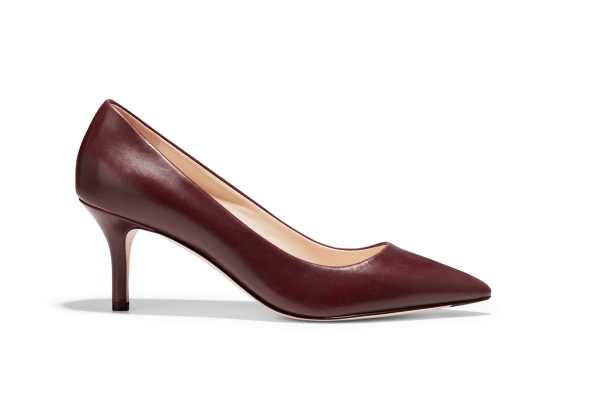
The launch of these new heels was a big success, selling so quickly that Cole Haan had to reorder them. But as Suh explains, Cole Haan has been working to continue tweaking the shoes to make them even better. This season, the company has launched a new heel called the Vesta that contains all the elements of the previous heels, but are slimmer and more elegant. “We don’t believe we should have to sacrifice beauty for comfort,” says Suh. “Our challenge is to incorporate these comfort features in a shoe that looks, on the surface, like just a shoe that is on-trend.”
But Suh points out that creating a more comfortable heel is more a journey than a destination. As the brand encounters new technology and learns new things about the biomechanics of the body, it will continue to adapt the shoes to make them even better. “In the fashion industry, we’re used to seeing new shoes come to the market every season,” she says. “Our goal is not just to update the style, but to update the technology within the shoe.”
(69)

